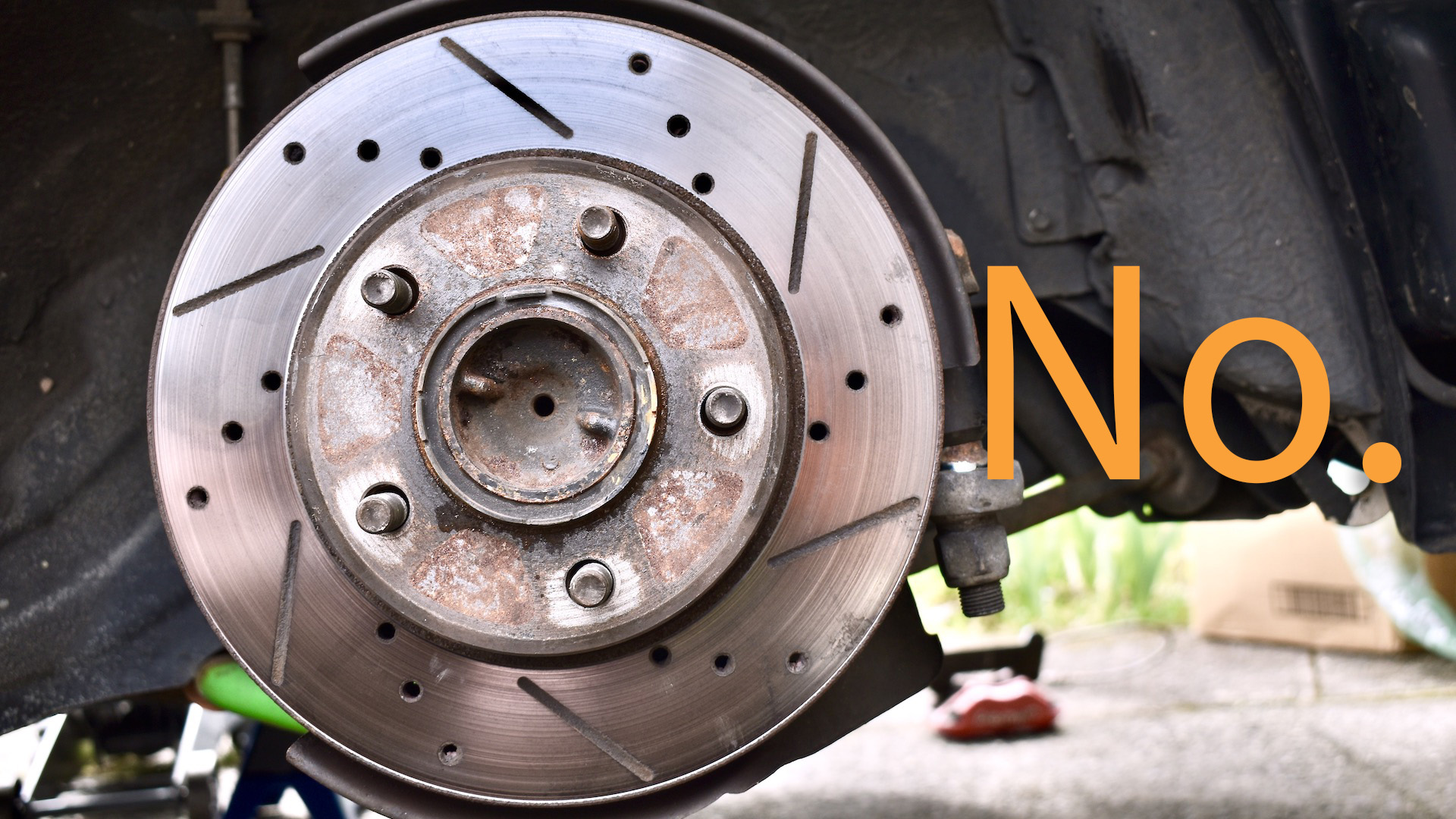

When you’re prepping a car for the track, or even window-shopping for street performance parts, one of the first mods your eyes will linger is on cross-drilled brake rotors. Brakes always top the list for performance and safety upgrades, and fancy rotors are found on the fastest racing and road cars alike. Plus, they’re cheap as far as upgrades go, and they look cool to boot. But odds are, they’re a waste of your money.
The value of drilled rotors is a conversation I’ve had multiple times recently; each time, my fellow grassroots racers have warned people away from them. The rationale in drilled rotors’ favor goes as follows: their increased surface area improves cooling, and the holes marginally decrease unsprung weight, improving performance. They also permit outgassing, which some older styles of pads used to need. But consensus among those with street smarts (or rather, road racing smarts) paints a different picture.


For starters, any extra head-shedding capacity is offset by the fact that drilled rotors’ reduced mass means they heat up more quickly, too. A greater temperature differential may improve heat exchange, but high temperatures could be bad for your brake pads, which will also get ground down quicker by the holes in the rotor.
The rotors themselves will also need more frequent replacement for multiple reasons. The drilling process introduces weak points into the metal, making them more likely to crack and fail. Holes can also add places for brake dust to accumulate, which might increase the odds of dust deposits causing an imbalance, therefore vibration. Even if none of these issues force you to replace your drilled rotors sooner, the fact that you can’t resurface a drilled rotor on a brake lathe means once they’re glazed, they’re done.

So if drilled rotors are so fraught with problems, why do Lamborghinis and Formula 1 cars use them? Well if you’re referring to the holes in their rotors, they probably weren’t drilled there. Many top-shelf factory brake rotors have their holes cast in rather than drilled, so they’re more durable. Their faster warmup may also be beneficial in carbon-ceramic or other extreme-duty brakes, which need high heat to work properly anyway. Plus, anyone who can afford to operate a professional-grade race car or supercar on track can afford to spend extra on consumables for small performance increases.
At the amateur level though, buying drilled rotors is probably going to cost you extra up front and long-term, all for little to no appreciable improvement in lap times. Instead, that money is better spent on good pads, which can withstand higher temperatures and may improve pedal feedback too. If things still get too spicy, you can add brake ducting, or even dimpled or slotted rotors that aren’t as fragile as drilled rotors.
But most of us are safe running regular old vented blanks, because they’re much cheaper and almost as good. And if all these upgrades still come up short, then the only answer is to get bigger brakes. Those are a headache for another time, though.
Got a tip or question for the author? You can reach them here: james@thedrive.com